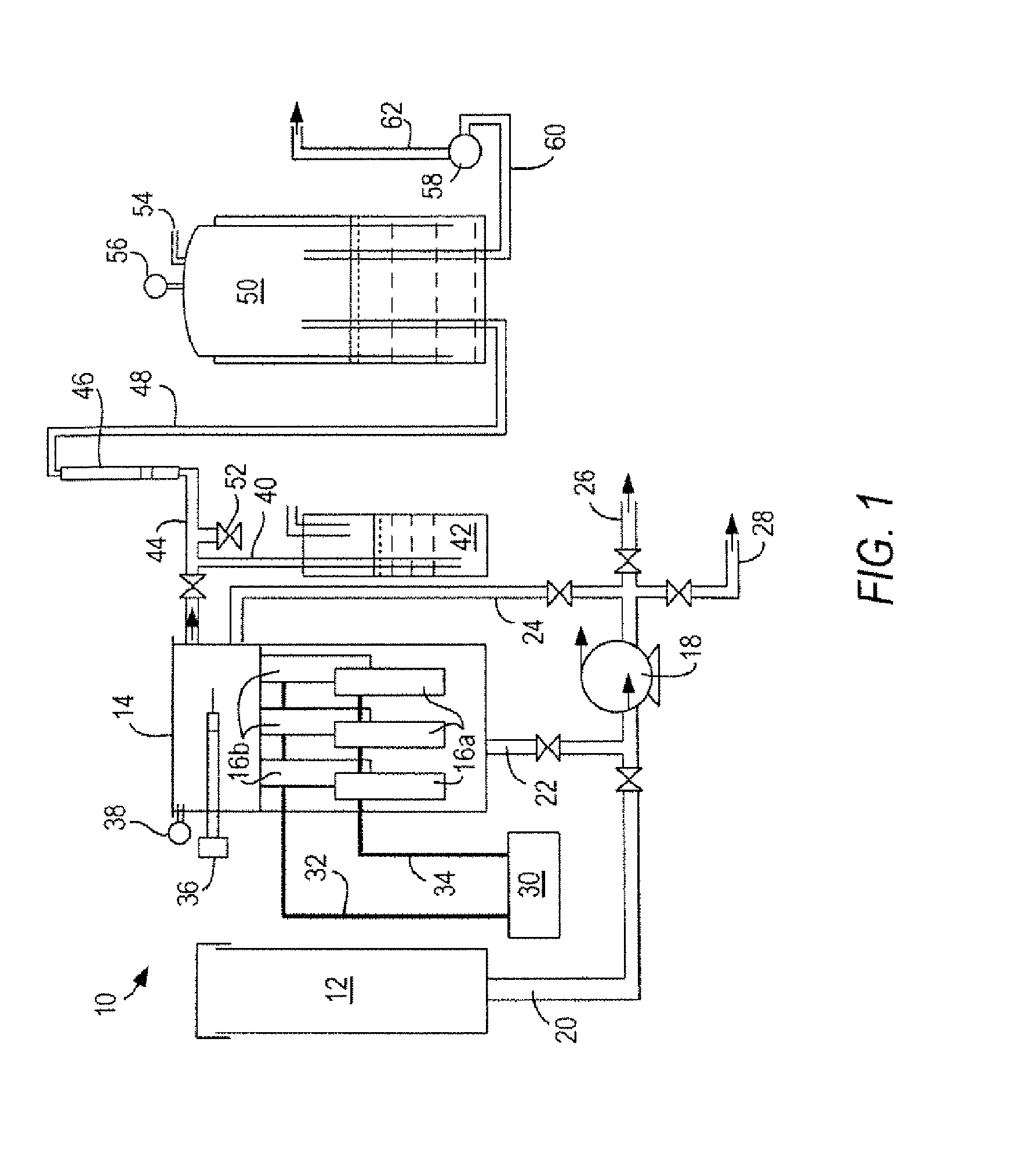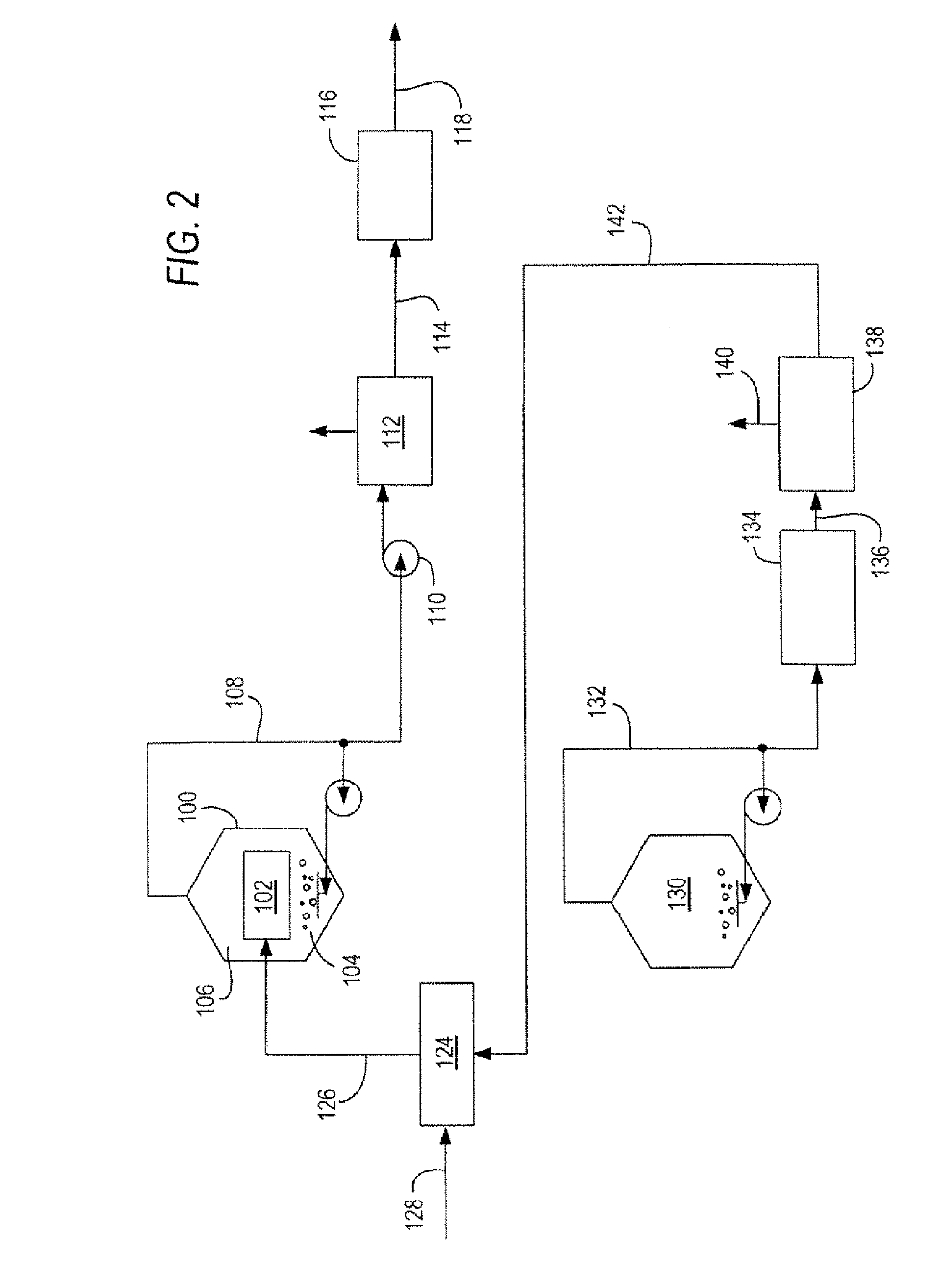Process and apparatus for producing hydrogen from sewage sludge
a technology of sewage sludge and hydrogen, which is applied in the field of hydrogen production process, can solve the problems of natural gas reformation, water electrolysis, and consumption of hydrocarbon fuels, and achieve the effect of producing hydrogen at low cos
- Summary
- Abstract
- Description
- Claims
- Application Information
AI Technical Summary
Benefits of technology
Problems solved by technology
Method used
Image
Examples
example i
[0059]The cathodes were comprised of three 0.05-inch thick aluminum sheets spaced 4 mm+apart. The pilot plant was started up and steady state conditions were reached on the fourth day.
[0060]The concentration of hydrogen in the off-gas reached a high level of 73% with an average level of 62.8%. The gas mixture produced was monitored continuously. The following data summarize the operation.
Total duration of run165hrsVoltage across electrodesbetween 3-3.2 voltsAverage Current137ampsAverage Current Density1.1amps / sq. ft.Spacing of electrodes1.5inchInitial pH of sewage sludge 7.75Average temperature in the digester103.2° F.Peak concentration of hydrogen 73%Average concentration of hydrogen62.8%
example ii
[0061]The cathodes comprised three 0.05-inch thick aluminum sheets bolted together leaving no space between the sheets. The pilot plant was started up and steady state conditions were reached on the fourth day. The concentration of hydrogen in the off-gas reached a high level of 72% by volume and an average level of 61.4%. The following data summarizes the operation.
Total duration of run212hrsVoltage across electrodes3voltsAverage Current134ampsAverage Current Density1.07amps / sq. ft.Spacing of electrodes1.5inchInitial pH of sewage sludge 7.8Average temperature in the digester107.3° F.Peak concentration of hydrogen72.0%Average concentration of hydrogen61.4%
example iii
[0062]The cathodes comprised two 0.05-inch thick aluminum sheets bolted on either side of an 8 mm thick thermo-foam sheet. The pilot plant was started up and steady state conditions were reached on the fifth day. The average composition of the gas was 66.4% hydrogen.
[0063]After 141 hours, steady state conditions were reached. Fifteen gallons of digested sludge were then removed from the digester daily and replaced with 15 gallons of feed sludge in order to simulate the semi-batchwise operation of a sewage plant digester.
The following data summarize the operation.Total duration of run141hrsVoltage across electrodes3voltsAverage Current129.5ampsAverage Current Density1.04amps / sq. ft.Spacing of electrodes1inchInitial pH of sewage sludge 7.8Average temperature of sewage103.7° F.sludge within the digesterPeak concentration of hydrogen71.6%Average concentration of66.4%hydrogen
[0064]The feed sludge contained 2.29% solids. After 141 hours, when steady state conditions were reached, the slud...
PUM
| Property | Measurement | Unit |
|---|---|---|
| temperature | aaaaa | aaaaa |
| temperature | aaaaa | aaaaa |
| temperature | aaaaa | aaaaa |
Abstract
Description
Claims
Application Information
 Login to View More
Login to View More - R&D
- Intellectual Property
- Life Sciences
- Materials
- Tech Scout
- Unparalleled Data Quality
- Higher Quality Content
- 60% Fewer Hallucinations
Browse by: Latest US Patents, China's latest patents, Technical Efficacy Thesaurus, Application Domain, Technology Topic, Popular Technical Reports.
© 2025 PatSnap. All rights reserved.Legal|Privacy policy|Modern Slavery Act Transparency Statement|Sitemap|About US| Contact US: help@patsnap.com



